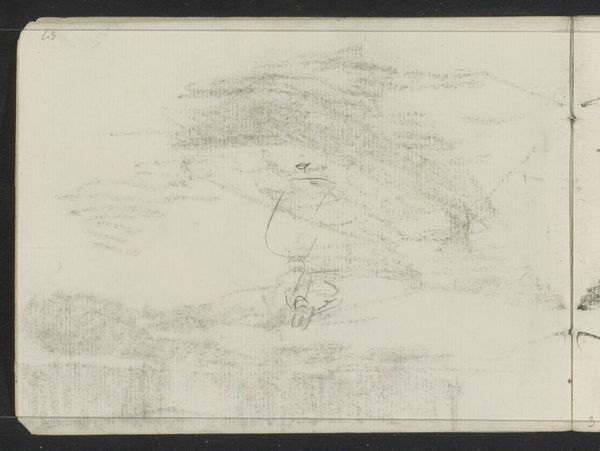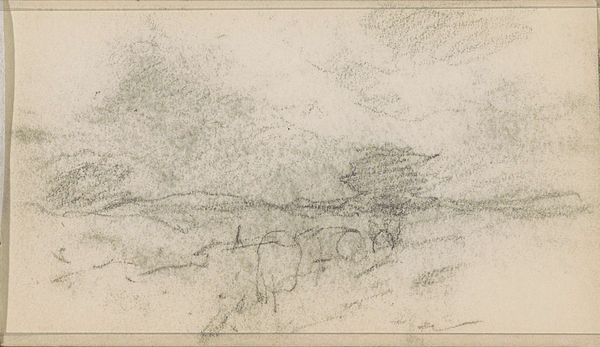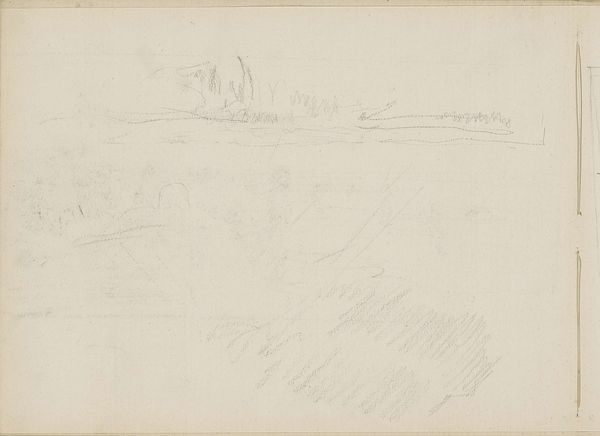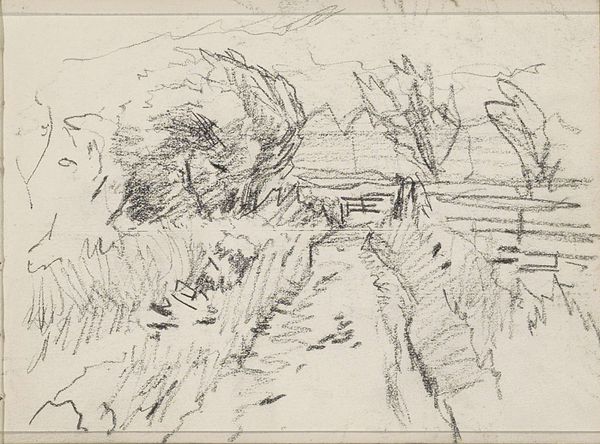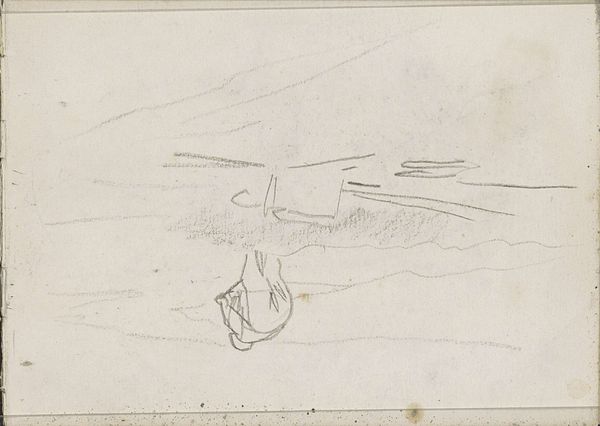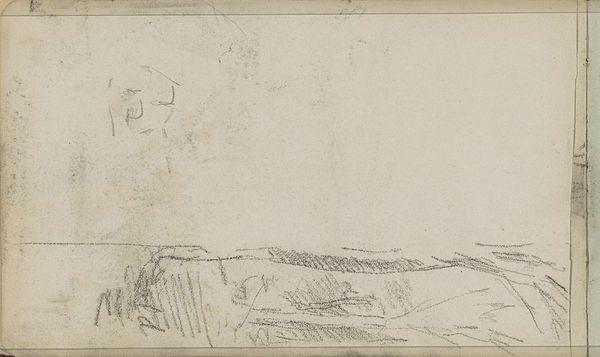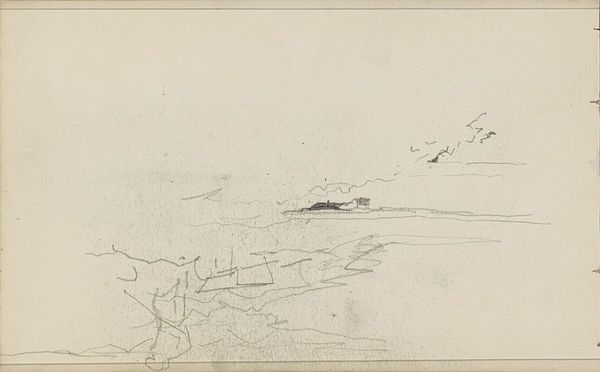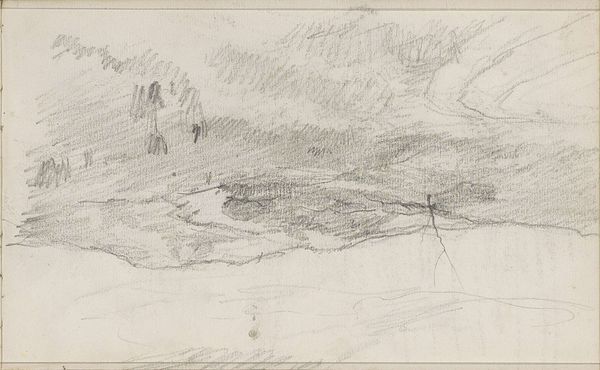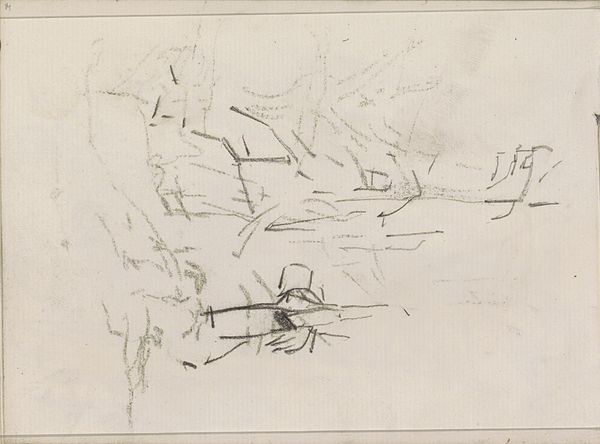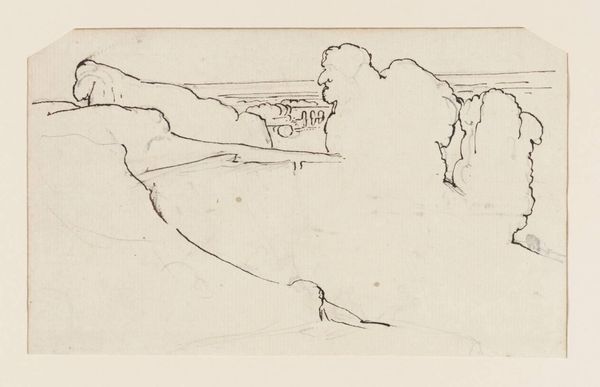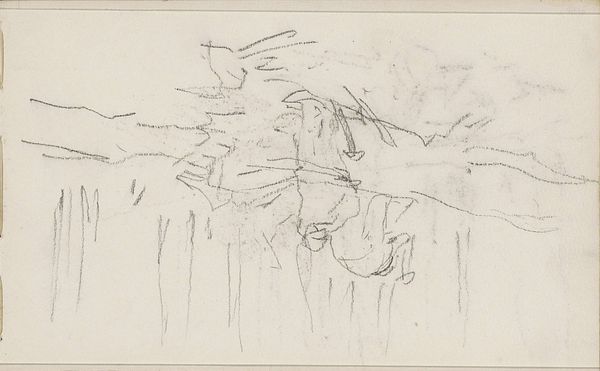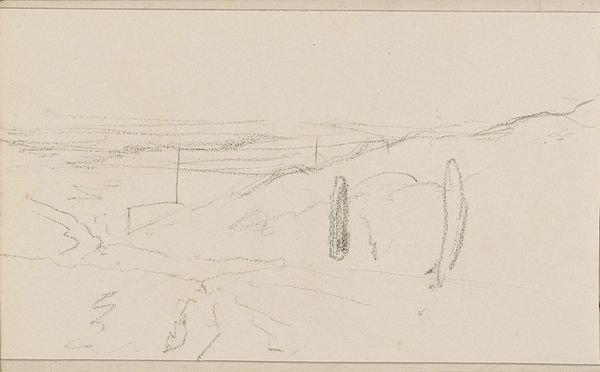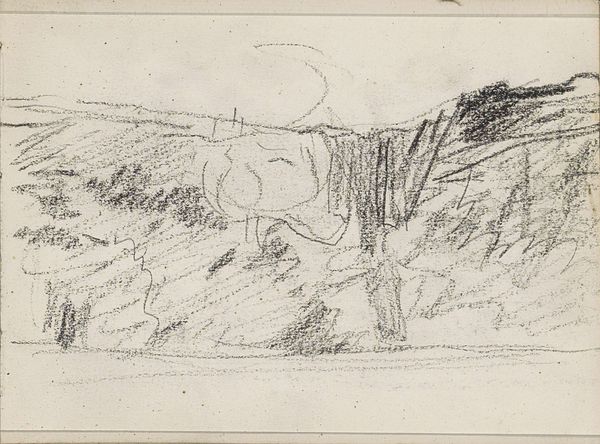
drawing, pencil
#
drawing
#
amateur sketch
#
light pencil work
#
impressionism
#
pencil sketch
#
sketched
#
incomplete sketchy
#
landscape
#
personal sketchbook
#
idea generation sketch
#
sketchwork
#
pencil
#
sketchbook drawing
#
realism
#
initial sketch
Copyright: Rijks Museum: Open Domain
Editor: Here we have Anton Mauve's "Man Walking Behind a Wheelbarrow," a pencil drawing that dates somewhere between 1848 and 1888. It feels very ephemeral and gestural, almost as if he was just trying to capture a fleeting moment. What do you see in this piece, in terms of form and composition? Curator: The beauty of this work resides precisely in its ephemeral quality, as you astutely noted. Examine the lines: light pressure, quick strokes. Notice how Mauve captures the essence of form rather than definitive contours. The composition favors open space, implying the figure's movement through a vast, undefined terrain. Semiotically, what do these choices suggest? Editor: I guess it points towards a focus on the experience of movement rather than a concrete depiction. The sketchiness gives a feeling of being unfinished, like it's more about capturing an impression. Curator: Precisely. The ‘unfinished’ quality invites the viewer to participate, to complete the image in their mind. Observe the structural relationships between the man and the wheelbarrow: how are they connected and do the proportional relations make the subject seem important? Is there a clear foreground or background and how do these formal aspects affect the visual hierarchy and interpretation of space within the drawing? Editor: They are definitely related proportionally, and their incompleteness makes me perceive space differently than a defined depiction. So it really pulls apart that figure-ground relationship that is so important? Curator: Indeed! Mauve masterfully subverts the traditional figure-ground relationship by dissolving concrete boundaries. That diffusion contributes to its suggestive and momentary nature, rather than aiming to record material and historical fact. What aspects of its formal elements are most successful? Editor: I appreciate the subtlety in his pencil work. The light strokes make me imagine what it must feel like to observe that scene for real, to have it be a glimpse more than a clear vision. Curator: I concur. Mauve’s "Man Walking Behind a Wheelbarrow" exemplifies how a focus on intrinsic form allows art to exist as more than merely a picture and invite greater, lived encounters.
Comments
No comments
Be the first to comment and join the conversation on the ultimate creative platform.
